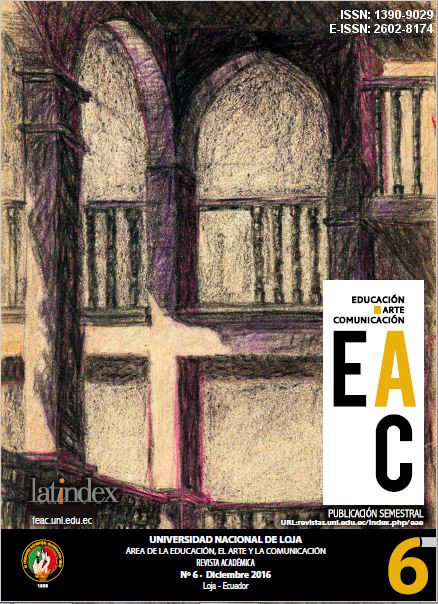Seguridad y protección de la Información en la Nube de Cómputo
Resumen
La seguridad de los datos siempre ha sido una importante tecnología de información y comunicación. Los datos y la información en la nube o mejor conocido como "cloud computing" se vuelve más importante porque los datos están en diferentes lugares alrededor del mundo. La seguridad de los datos y la protección de la privacidad son dos factores principales de interés para el usuario al utilizar esta tecnología. Se han realizado muchas investigaciones sobre este tema en el ámbito académico, tecnológico, gubernamental, industrial y empresarial, siempre coincidiendo en que la seguridad de los datos y la protección de la privacidad son cada vez más importantes para el desarrollo futuro de esta importante y necesaria herramienta tecnológica. Este artículo discute diferentes estudios sobre cloud computing, con el fin de verificar diversas técnicas de seguridad, tanto de software como de hardware, para diseñar nuevos procedimientos y aumentar su fiabilidad.Citas
Avizienis, A., Laprie, J. C., Randell, B., & Landwehr, C. (2004). Basic concepts and taxonomy of dependable and secure computing. Ieee Transactions on Dependable and Secure Computing, 1(1), 11-33.
Bouayad, A., Blilat, A., El Houda Mejhed, N., & El Ghazi, M. (2012). Cloud computing: Security challenges. Information Science and Technology (CIST), 2012 Colloquium In, pp. 26-31.
Deyan Chen, & Hong Zhao. (2012). Data security and privacy protection issues in cloud computing. Computer Science and Electronics Engineering (ICCSEE), 2012 International Conference On, , 1. pp. 647-651.
Erickson, J. S. (2003). Fair use, DRM, and trusted computing. Communications of the
ACM, 46(4), 34-39.
Gajanayake, R., Iannella, R., & Sahama, T. (2011). Sharing with care an information accountability perspective. IEEE Internet Computing, 15(4), 31-38.
Hurst, D. (2011). Cloud security knowledge 101 [cloud computing security]. Security, 48(3), 94, 96-94, 96. IBM seguiridad. (2010). Retrieved 11/25/2014, 2014, from http://tupiensas.com/ibm-desarrolla-un-sistema-criptografico-revolucionario/
Karat, J., Karat, C., Brodie, C., & Feng, J. (2005). Privacy in information technology: Designing to enable privacy policy management in organizations. International Journal of Human- Computer Studies, 63(1-2), 153-174.
Kirkham, T., Djemame, K., Kiran, M., Ming Jiang, Armstrong, D., Corrales, M., et al. (2012). Assuring data privacy in cloud transformations. 2012 IEEE 11th International Conference on Trust, Security and Privacy in Computing and Communications (TrustCom), , 1063-9.
Ko, R. K. L., Jagadpramana, P., & Bu-Sung Lee. (2011). Flogger: A file-centric logger for monitoring file access and transfers within cloud computing environments. Trust, Security and Privacy in Computing and Communications (TrustCom), 2011 IEEE 10th International Conference On, pp. 765-771.
Ko, R. K. L., Jagadpramana, P., Mowbray, M., Pearson, S., Kirchberg, M., Qianhui Liang, et al. (2011). TrustCloud: A framework for accountability and trust in cloud computing. Proceedings of the 2011 IEEE World Congress on Services (SERVICES 2011), , 584-8.
LaMacchia, B. A. (2002). Key challenges in DRM: An industry perspective. Digital Rights Management, 2696, 51-60.
Leavitt, N. (2009). Is cloud computing really ready for prime time? Computer, 42(1), 15-20.
Mell, P., & Grance, T. (2010). The NIST definition of cloud computing. Communications of the ACM, 53(6), 50-50.
Pearson, S., & Benameur, A. (2010). Privacy, security and trust issues arising from cloud computing. Proceedings of the 2010 IEEE 2nd International Conference on Cloud Computing Technology and Science (CloudCom 2010), , 693; 693-702; 702.
Shacham, H., & Waters, B. (2013). Compact proofs of retrievability. Journal of Cryptology, 26(3), 442-483.
Subashini, S., & Kavitha, V. (2011). A survey on security issues in service delivery models of cloud computing. Journal of Network and Computer Applications, 34(1), 1-11.
Wang, Q., Wang, C., Ren, K., Lou, W., & Li, J. (2011). Enabling public auditability and data dynamics for storage security in cloud computing. IEEE Transactions on Parallel and Distributed Systems, 22(5), 847-859.
Yu Shyang Tan, Ko, R. K. L., Jagadpramana, P., Chun Hui Suen, Kirchberg, M., Teck Hooi Lim, et al. (2012). Tracking of data leaving the cloud. Trust, Security and Privacy in Computing and Communications (TrustCom), 2012 IEEE 11th International Conference On, pp. 137-144.
Zeng, K. (2008). Publicly verifiable remote data integrity. Information and Communications Security, Proceedings, 5308, 419-434.
Zhang, O. Q., Kirchberg, M., Ko, R. K. L., & Bu Sung Lee. (2011). How to track your data: The case for cloud computing provenance. Proceedings of the 2011 IEEE 3rd International Conference on Cloud Computing Technology and Science (CloudCom 2011), , 446-53.
Descargas
Publicado
Cómo citar
Número
Sección
Licencia
EAC declara una política de autoarchivo que les permite a los autores colaboradores publicar y difundir sus artículos en otros medios electrónicos (webs personales, repositorios institucionales, blogs, etc.) bajo los requisitos de la licencia CC BY-NC-SA 4.0 Como condición exige que suministren la información bibliográfica pertinente que acredite su primera publicación, lo que se autoriza solo después de que la EAC haya publicado la investigación.
El autor conserva los derechos de su obra publicada. La revista EAC le solicita únicamente que se le cite como fuente original (revista, editorial, DOI y URL de la obra), que no use la obra con fines comerciales u onerosos, pero sí que se mencione explícitamente la existencia y especificaciones de licencia antes mencionada.
EAC no cobra honorarios por procesamiento ni publicación de artículos. Todas nuestras gestiones son totalmente gratuitas.








